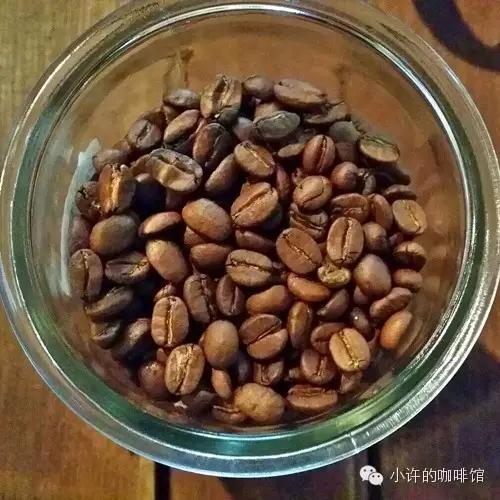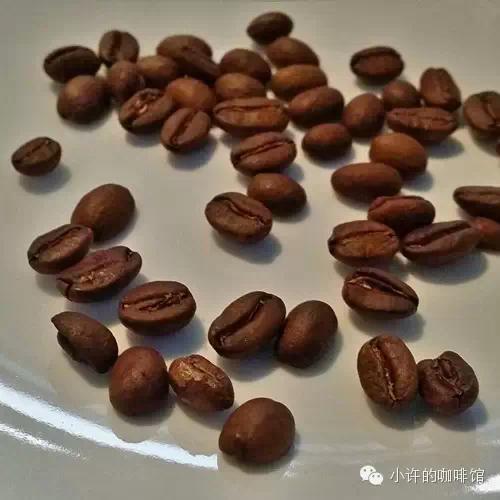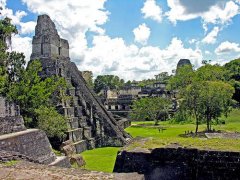World Coffee Tour A big coffee producer in Guatemala and Central America
Guatemala is a big coffee producer in Central America, ranking eighth in the world in terms of output. Guatemala, whose name comes from the Mayan language, means "country of the forest", thelandofmanytrees. Located in Central America, it is known as "the pearl in the crown of China and the United States". Although Guatemala has a limited land area, it has a rich and diverse climate. A country famous for lakes and volcanoes, with volcanic soil, precipitation, temperature, humidity and altitude, Guatemala has a natural environment suitable for coffee growth.

In the 1850s, coffee was brought to Guatemala by missionaries. In the 19th century, with the invention of European synthetic dyes, Guatemala's original important export industry was hit, coffee gradually became an important export, and coffee cultivation gradually expanded. By the end of the 19th century, coffee had played an important role in Guatemalan politics and economy. Large coffee farmers had great influence on the political situation. Under the leadership of a president born as a coffee farmer, the government promoted coffee cultivation through free coffee seedlings and tax policies. In 1944, after the democratically elected president came to power, the reform policy was implemented and the cheese of the vested interests was overthrown under the planning of the US intelligence service. Guatemala was plunged into a half-century-long civil war until 1996.
The civil war damaged the original coffee industry, but the original species of coffee in Guatemala, mainly bourbon, were preserved.
Guatemala's coffee industry plays an important role in the domestic economy, with coffee exports accounting for 1/3 of total foreign exchange revenues. Guatemala was once the largest coffee producer in China and the United States until it was overtaken by Honduras in 2011.
Guatemala, the most populous country in Central America after Mexico, provides a rich labour force for coffee production, which is grown on most small-scale farms. 2/3 of the country is mountainous, and the west and south belong to volcanic belts. The humid climate and rich volcanic ash soil provide unique natural conditions for coffee production. Coffee production is widely distributed in all parts of the south-central region except the Peton lowlands in the north.

Coffee grade
Traditional Guatemalan coffee is graded according to the altitude at which it grows:
SHB, extremely hard beans, ≥ 1370m
HB, hard beans, 1370-1066m
Prime-ExtraPrime, selected, 762m-1066m
Let's talk about the seven main production areas:
1) Highland Huehue Vivette South Highland
2) Volcanic San Marcos San Marco volcanic area
3) Traditional Atitlan traditional Attland
4) Rainforest Coban Kuban and forest area
5) Fraijjanes Plateau Fletcher Heights
6) Antigua Classic Classic Antigua
7) New Oriente Orete New area
This time, it mainly introduces two important and most excellent bean production areas, Vivette South Highland and Classical Antigua.
NO.1 Vivette South Highlands:

The average elevation of the region is between 1500 and 2000 meters above sea level, and the Gucci Madane, the highest peak in Central America, is in this area. Fortunately, there is a warm wind from the Cuantepec Plain in Mexico, which protects high-altitude mountains from frost. Although there is no volcanic ash soil in other parts of Guatemala, the excellent quality of coffee in the region can be created by the excellent quality of coffee in the region. Many excellent small farms have sprung up in this area during the COE Competition this year.
NO.2 classic Antigua:

Antigua, the oldest and most famous coffee productivity in Guatemala, can be said to be a veritable "classic".
This area has fertile pozzolanic soil, low humidity, rich sunshine and high temperature difference between day and night, which forms a unique geographical environment for coffee growth. The area is surrounded by Ague,Acetenango and Fuego volcanoes, especially the regular eruptions of Fuego, one of the three major volcanoes in Guatemala, provide the region with rich volcanic ash nutrition. Antigua is favored by coffee lovers for its wonderful floral fragrance, bright acidity and the bitterness of chocolate, and what is more unique is its unique "volcanic smoke" aroma produced from volcanic soil, so it is also known as "smoke coffee"!
Finally, it should be noted that when baking, roasting in the city can bring its taste to the extreme, balanced and rich! seven boutique coffee producing areas have their own characteristics, on the whole, Guatemalan coffee brings a clear cup experience with elegant acidity, full and round, with a floral aroma and a clean, long finish, and its wonderful floral aroma and vivid and bright taste are unmatched by other coffee. It is also suitable for mixed coffee, and the sweetness and bitterness of chocolate will continue into the long aftertaste, without the heavy bitterness of Colombia, the flavor and sweetness are better than Colombia, although the overall taste of Guatemala is relatively light, but it has a good aftertaste for a long time after drinking. In addition, coffee from some producing areas also brings a wonderful smoky flavor.
Important Notice :
前街咖啡 FrontStreet Coffee has moved to new addredd:
FrontStreet Coffee Address: 315,Donghua East Road,GuangZhou
Tel:020 38364473
- Prev

Characteristics and attributes of coffee from eight major producing areas in Guatemala Guatemala
The Ekatlago Valley is 2000 meters (6500 feet) above sea level, with dense shade and unique ecology. The nearby Fuego volcano erupts, making its coarse, sandy soil rich in a variety of minerals. Temperate sea breezes from the Pacific and a seasonal climate allow coffee in this region to be dried by sunlight and processed according to traditional family methods that have been accumulated over the years. [characteristics]
- Next

Antigua Coffee, the second coffee producing area in Guatemala
The Antigua Valley (Antigua Valley) is the oldest and best-known coffee producing area in Guatemala. Volcanoes and extremely shallow groundwater levels form a dry microclimate, characterized by low humidity, adequate sunshine and cool nights. Antigua is a closed valley surrounded by three volcanoes: Agua, Acatenango and Fuaigo.
Related
- Detailed explanation of Jadeite planting Land in Panamanian Jadeite Manor introduction to the grading system of Jadeite competitive bidding, Red bid, Green bid and Rose Summer
- Story of Coffee planting in Brenka region of Costa Rica Stonehenge Manor anaerobic heavy honey treatment of flavor mouth
- What's on the barrel of Blue Mountain Coffee beans?
- Can American coffee also pull flowers? How to use hot American style to pull out a good-looking pattern?
- Can you make a cold extract with coffee beans? What is the right proportion for cold-extracted coffee formula?
- Indonesian PWN Gold Mandrine Coffee Origin Features Flavor How to Chong? Mandolin coffee is American.
- A brief introduction to the flavor characteristics of Brazilian yellow bourbon coffee beans
- What is the effect of different water quality on the flavor of cold-extracted coffee? What kind of water is best for brewing coffee?
- Why do you think of Rose Summer whenever you mention Panamanian coffee?
- Introduction to the characteristics of authentic blue mountain coffee bean producing areas? What is the CIB Coffee Authority in Jamaica?

